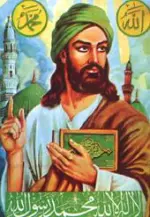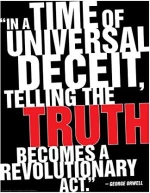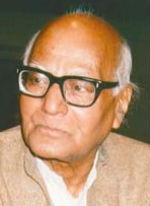 Viewed from a Pagan perspective, Christianity appears to have passed through several phases, beginning as an obscure Jewish militant movement against Rome to becoming the master of the Roman Empire and much of Europe, evolving into the most important tool of Euro-colonialism to its present state of adjusting to changes in the post-colonial world. It is obviously beyond the scope of a short article to do justice to this immense history, beyond highlighting some of the lesser known aspects of Christian history. – Dr N. S. Rajaram
Viewed from a Pagan perspective, Christianity appears to have passed through several phases, beginning as an obscure Jewish militant movement against Rome to becoming the master of the Roman Empire and much of Europe, evolving into the most important tool of Euro-colonialism to its present state of adjusting to changes in the post-colonial world. It is obviously beyond the scope of a short article to do justice to this immense history, beyond highlighting some of the lesser known aspects of Christian history. – Dr N. S. Rajaram
Christianity, like Islam, but unlike their common parent Judaism, is largely an imperial movement. Conversion is to Christianity what jihad is to Islam—an expansionist doctrine. Where Islam seeks to bring the whole world under its sway through jihad, Christianity’s goal is to make the world Christian, or turn it into Christendom, by conversion. The goal of such religions is not inner spiritual experience for the individual, which is generally denied by them, but conquering the external world for the belief.
This conversion may take many forms and shapes—service, violence, deception, political or military coup or whatever works in the situation at hand. The victim or the intended victim usually sees only one aspect, especially service, and often assumes that Christianity is mainly a religion of peace and service. This is the case in India where, except in pockets like Goa, the Church was never strong enough to resort to conversion by force. So it resorted to more subtle means. This is still the case.
One area in which Christianity has excelled, absolutely without a peer is publicity; it is without doubt the most successful publicity organization in history. One result is that the victims themselves within a few generations are convinced that they have been saved, though it is not always clear from what. Since Christianity is also a historical religion with an extremely violent record, it seeks to impose on the world, especially on its victims, a sugar-coated version of history that always shows Christianity in favorable light as a humanitarian movement. This is facilitated by the fact that Christian organizations own or control much of the media in developing countries.
Modern Christianity likes to speak in terms of peace, brotherhood, love and compassion, as if it were a universalist movement. It may take up causes like anti-war activities, social uplift, medical help and education. But Christianity does not honor other religions or accept them as valid. To date, no major Christian religious leader has made a public statement accepting any other religion as equal to Christianity or any other religious leader as equal to Jesus.
Christianity has One God but two humanities and looks down upon non-Christians as inferior people. It promotes violence and inequality between believers and non-believers, thus bringing social tension, conflict, even war and genocide along with its conversion efforts, as history reveals. targeting the poor and uneducated in other religions, it likes to pretend that Christianity brings the advancement of society. Since the end of the colonial era, when the Christian armies had to retreat from their colonies, it has sought to promote this softer face, while not giving up its exclusive views and denigration of other traditions.
This command of publicity makes it hard to expose Christianity’s imperial face. Churches and their officials don’t take kindly to any attempts to question their version of history or their activities. This is what happened when Indians, Hindus in particular, raised questions about its aggressive conversion activities. A barrage of publicity was let loose by churches and the media when Hindus reacted to Christian violence, including the recent murder of a highly respected Hindu social worker. But there is a long overdue debate about Christianity’s expansionist activities in the guise of service.
Such questioning of Christianity’s claims has a long history in the West, but is relatively new in India. It is unnecessary to go into reasons for this belated response, beyond noting that India’s colonial past and the excessive deference shown to Christianity and its institutions by the ruling elite and English media are major contributors (important topics not discussed in this article). Here is a very brief history of Christianity as an imperial movement, seen from a non-Christian, Pagan perspective.
Viewed from a Pagan perspective, Christianity appears to have passed through several phases, beginning as an obscure Jewish militant movement against Rome to becoming the master of the Roman Empire and much of Europe, evolving into the most important tool of Euro-colonialism to its present state of adjusting to changes in the post-colonial world. It is obviously beyond the scope of a short article to do justice to this immense history, beyond highlighting some of the lesser known aspects of Christian history.
Origins: Co-opting a Jewish movement
Christianity’s birth was bloody and violent. It grew out of the violent conflicts between the Roman rulers and an obscure—to the Romans obscurantist—Jewish sect in Palestine, then known as Judea. The leader of this sometimes militant sect was James commonly called The Righteous. He is known to Christianity as the brother of Jesus, but there is little evidence for the existence of Jesus as a historical figure and that little remains questionable. References to him in the works of the Jewish historian Josephus, the most important source for the period, have been seriously tampered with by later Christian scribes. Some are outright forgeries.
Christians and non-Christians alike take the Biblical accounts (in the Gospels of the New Testament) to be historical, but these are easily shown to be later fabrications. Of one thing we may be certain—even if Jesus was an historical figure, the Jews had nothing to do with his persecution and death. His crucifixion by the Romans, if true, was because Jesus led a rebellion against the Roman Empire, as did a number of Jewish leaders of the times, and not because of his radical teachings. His supposed teachings are not all that radical and lie within the Jewish tradition. Here are a couple of examples:
Think not that I am come to destroy the law, or the prophets: I am not come to destroy, but to fulfil.
For verily I say unto you, Till heaven and earth pass, one jot or one tittle shall in no wise pass from the law, till all be fulfilled. – Matthew 5. 17–18
Note the famous statement attributed to Jesus, “Give unto Caesar what is Caesar’s and give unto God what is God’s”, would never have been made by a Jewish leader, as the Jews never accepted any Roman right to rule Israel.
The Law here refers to the Law of Moses, the ultimate source of Orthodox Judaism. These are the words of a traditionalist, not a rebel. This Jesus was co-opted first by Paul and later by other Church leaders and turned into a victim of Jewish persecution. This is how he is presented in the Gospels though there are enough hints to indicate otherwise. About James, the real leader of the sect there is no doubt. He was both historical and an orthodox, even ultra-orthodox Jew. All of the twelve apostles of Jesus were Jews.
It is important to keep in mind that the Gospels are propaganda literature, not history. They are not eyewitness accounts as claimed by Christians. They were created to fulfil the prophecies about the expected Messiah (Christ) who would deliver the Jews from Roman rule. The identification of Jesus with the Christ came later. The famous Dead Sea Scrolls, more properly known as Qumran texts, have shed important light on the period of early Christianity. They tell us that the Gospels dramatise and project as history the messianic expectations of some Jewish sects in Palestine. John Allegro, one of the pioneers of Dead Sea Scrolls Research wrote:
… the scrolls prompt us increasingly to seek an eschatological meaning for most of Jesus’ reported sayings: more and more become intelligible when viewed in the light of the imminent cataclysms of Qumran expectations, and the inner conflicts in men’s hearts as the time grew near.
In other words, Jesus Christ (Jesus the Messiah) was little more than a personification of the messianic expectation of some extremist sects in the Qumran region of Palestine. These Qumran texts (Dead Sea Scrolls) go back a century before the supposed birth of Jesus. They contain important details that were later appropriated by the Gospel authors and attributed to Jesus. We may take a brief look at a few of them.
There is a long history of murdered or sacrificed savior in the ancient Near East including Osiris of Egypt and Adonis of Syria. Christianity borrowed from all these. Even the Persian Mithra is a sacrificial God that the Christians borrowed heavily from.
The Last Supper is one of the most enduring images in Christian mythology. Catholics (and other sects also) celebrate the “Lord’s Supper” to commemorate the event. But Biblical scholars have found that the ceremony of the Lord’s Supper is described in some Qumran texts more than a century before the birth of Christ. What this means is that the Gospel writers appropriated a practice that already existed and turned it into a story about Jesus. So the Last Supper is a fictional dramatisation of a long-standing practice predating Christianity.
Jesus is known as the Son of God, the Son of the Most High and also as of the Branch of David, the legendary king of Israel. He is placed in the Gospels in a lineage going back to King David as if he were meant to be a king. All these are proclaimed in the Bible. The Gospels give also genealogies of Jesus tracing his ancestry to King David. (This contradicts the claim that Jesus was the Son of God, but no matter.) But all these attributes are found in Qumran texts that go back a century or more before the birth of Jesus. Here are two passages from the Dead Sea Scrolls:
He will be called the Son of God: they will call him the Son of the Most High. … His kingdom will be an eternal kingdom, and he will be righteous in all his ways. He will judge the earth in righteousness.
I shall be the father and he shall be my son. He is the branch of David who shall arise with the interpreter of the law to rule in Zion at the end of time.
The heavens and earth will obey this messiah … and all that is in them … and he will heal the sick, resurrect the dead, to the meek announce good tidings. … He will shepherd them.
The Gospels attribute all these to Jesus. But as just noted they appear in texts that date back a century or more. The story does not end here. Even crucifixion, the central myth of Christianity, was found in the Dead Sea Scrolls, in a text known as the “Pierced Messiah”. When Robert Eisenman, regarded as one of the world’s foremost Scrolls scholar, announced his discovery of the text and its explosive implications, the Vatican tried first to suppress and then discredit it. Biblical scholar Neil Asher Silberman noted:
Here as Eisenman believed was additional proof (if any was needed) that the International Team [of the Vatican] was sitting on explosive material for decades that would show that the passion of the messiah [his crucifixion] … was a common expectation and not a historical event.
In summary, the Dead Sea Scrolls discovered in the Qumran region have shown that nearly all the important events relating to the life of Jesus given in the Gospels are later fabrications drawing upon beliefs and practices that existed for a century or more before the birth of Christianity. The history of Jesus is irrelevant since he was nothing like the Jesus of the Bible. It is this fictional Jesus, however, that the Vatican and other Christian organizations hold up as the saviour in pursuit of their activities, especially conversions. For this reason the Vatican tried to suppress these findings for several decades through its “International Team” of Biblical scholars. The Vatican monopoly was finally broken by Robert Eisenman in 1991. (See author’s The Dead Sea Scrolls and the Crisis of Christianity.)
This means that the “history” of Jesus found in the Gospels is a later fabrication, created for propaganda purposes. Jesus may never have existed, and even if he did he was nothing like how the Bible describes him. James was the leader of the sect that was awaiting the Messiah who would lead them in a victorious battle and deliver them from the Romans. The Jerusalem Church—also known as the Jewish Church—that James headed was destroyed by the Romans in the First Jewish War of 66-71 AD.
James had been killed earlier, around 64 A.D., by a gang of dissidents opposed to his teachings. According to scholars, the leader of this dissident group was a Hellenized Jew and a privileged Roman citizen known as Saul of Tarsus, better known as St Paul. He may be seen as the real founder of Christianity. Hence Biblical scholars refer to Christianity as Pauline Christianity.
The killing of James triggered a series of uprisings in Palestine that burst into the First Jewish War in 66 AD. The Jerusalem Church led by James the “brother was Jesus” was destroyed in the war. This left the field open for Paul to propagate his version of Christianity. Paul who had never seen Jesus, either because Jesus never existed or because he had been dead by the time Paul entered the picture, simply used Jesus as a symbol in his propaganda. To Paul, the master propagandist, history was irrelevant.
Many Christianities: from Paul to Constantine
From this brief outline of Christian origins—actually of the first phase of Christianity—it is clear that the historical picture is radically different from what is given in the New Testament of the Bible, especially the Gospels. Here is what Eisenman had to say about the new picture of the birth of Christianity revealed by the Dead Sea Scrolls:
So what do we have in these manuscripts? Probably nothing less than a picture from which Christianity sprang in Palestine. But there is more … what we have is a picture of what Christianity actually was like in Palestine. The reader, however, probably will not be able to recognise it because it will seem to be virtually the opposite of the Christianity with which he or she is familiar.
All this was destroyed by the Romans in the First Jewish War. James had died a few years earlier, in or around 64 AD. Jamesian Christianity represented the Jewish orthodoxy overlaid with messianic expectations that were common among the Jews of Palestine at that time. It was essentially a revivalist movement that looked back to the Jewish state of the Maccabean priest-kings and the Old Testament prophecies that promised the return of a Jewish “Redeemer” (Christ or Messiah) driving out the hated Roman rulers. The Gospels are essentially a recreation of these as a “history” built around Old Testament prophecies.
Opposing James and his conservative movement was a group of liberal Jews that advocated reform and accommodation with the Romans, led by Saul of Tarsus, later known as St Paul. Paul was born into a wealthy family and was a privileged Roman citizen. Like the Romans, he believed that James and his Jerusalem Church were holding back progress and leading the Jews to disaster by going against the might of Rome. Paul, accompanied by some followers, seems to have taken his message of reform to James and his followers in Jerusalem. They did not take kindly to Paul’s message, which led to heated exchanges ending in violence. James himself was stoned to death in the fracas.
Eisenman summed up the difference between the two visions in the following words:
Both movements used the same texts, the same scriptural passages as proof texts, similar conceptual contexts; but the one can be characterised as the mirror reversal of the other. While the Palestinian one [of James] was zealot, nationalistic, engage, xenophobic, and apocalyptic; the overseas one was cosmopolitan, antinomian … in a word “Paulinised”. Equally, we may refer to the first as Jamesian….
A point to note is that if Jesus did exist he would have been part of the orthodox group led by James and not the one created by Paul who was hostile to Jamesian orthodoxy to the point of destroying it. Nonetheless, while Jamesian Christianity (and its church) died in the Jewish War, the Pauline version, or a least a mutation of it, became an imperial movement gaining Rome itself as its first conquest. While the inward looking Jamesian orthodoxy failed to survive, Paul’s heresy went from strength to strength.
Who was this Paul, the founder of arguably the greatest imperial movement in history? Paul was born about 4 AD in Tarsus in Anatolia (eastern Turkey), a city that rivalled Athens and Alexandria for its wealth and culture. He was Jewish, known originally as Saul, but born into a wealthy and privileged family and enjoyed Roman citizenship from birth. By education and upbringing he was more Greek than Jewish. While the Jews of Jerusalem spoke Aramaic, the vernacular language, Paul always used Greek, the language of the elite. We do not know if he was proficient in Aramaic or the sacred language Hebrew.
Paul visited James and his followers in Jerusalem at least twice but found them backward looking and tried to drag them out of their insular world (which brought him into conflict and the death of James). Some scholars claim that Paul, a loyal and privileged Roman citizen, was acting as an agent of Rome in an attempt to break up the chronically rebellious Jews of Palestine. In any event, it is doubtful that St. Paul believed in a historical Jesus, which is why he preached a Christ of faith rather than a Jesus of history. This made James and his followers furious. They believed in Christ (Messiah) as a physical being.
Paul was born a Jew but his religious views were far removed from those of the Jerusalem sect headed by James. Rome was Pagan, and like India today was home to several religious groups. Among the most influential were mystery religions and Gnosticism. The Gnostics held that some sages possessed gnosis, the Greek equivalent of the Sanskrit gnana (or jnana) meaning secret knowledge, which they imparted to some chosen disciples. This can be compared to the sages of the Upanishads and their method of teaching. Some scholars detect Indian influence on Gnostic teachings.
As noted, the idea of a redeemer (Messiah or Christ) as saviour was in the air for more than a century before Christianity. Unlike the Jews, Gnostics were open to outside influences and readily accepted the idea. But while the Jews saw the saviour as a human figure who would release them from bondage to Rome, the Gnostics saw him as a spiritual symbol who would save their souls. Paul was strongly influenced by Gnostic ideas and interpreted Jesus as a spiritual symbol. It was this Gnosticised version of Christianity that Paul carried with him and preached during his extensive travels, presenting Jesus as a Gnostic teacher.
Originally, Pauline Christianity was a Gnostic hybrid overlaid with the messiah as a spiritual symbol. This is far removed from the religious vision of James and far removed also from the version found in the Bible. This is because Church propaganda turned Paul the Gnostic into Paul the Apostle of the Jerusalem Church, just as it turned Jesus the Orthodox Jew (if historical) into Jesus the crucified Jewish rebel. Just as the Gospels were used to create this fictional Jesus, the book known as Acts of the Apostles rewrote the life and teachings of Paul to suit Church propaganda, erasing his Gnostic leanings.
The two centuries after the Jewish War saw the growth of an enormous number of Gnostic gospels reflecting the great diversity of religious thought then prevailing in the Roman Empire. These are collectively known as Gnostic gospels and its creators as Gnostic Christians. It is impossible in a single article to do justice to this extraordinary subject, but the fate of a single text known as the Gospel of Judas will give some idea of the scene in the first three centuries of Christianity.
For nearly two thousand years, Judas Iscariot has been reviled as the archetypical betrayer for which the Jews have been made to pay a terrible price. But the Gospel of Judas gives a radically different picture: Judas, far from being a traitor was Jesus’s closest disciple to whom, and to whom alone, Jesus entrusted the most important task needed to fulfill his mission on earth—to die for the sins of mankind. In handing Jesus over to the Romans, Judas was doing exactly what his master ordered him to do. But for this act of Judas there would be no Christianity.
This is the dramatic, not to say shocking message of the Gospel of Judas, one of the forty-odd gospels that were in circulation during the first four centuries of Christianity. This is discussed in absorbing detail in Reading Judas by Elaine Pagels and Karen King, two of the world’s greatest biblical scholars. This is startlingly different from the story in the New Testament. Here is the reason for the disparity.
The standardisation of the New Testament with its four canonical gospels that we know today—of Mark, Luke, Matthew and John—took place in the fourth century. This had the effect of lowering the message from a spiritual to a material plane with the story of Jesus’s body disappearing from the grave with a resurrected body. To a non-believer or a scientifically informed person, this supposed miracle seems absurd. But it remains the foundation of Christian belief. The Gnostics also rejected the notion of Christ as a physical being, interpreting him spiritually. Remarkably, even Paul saw Jesus in spiritual terms as befitting his Gnostic leanings.
The Gospel of Judas and the Gospel of Thomas are among the Gnostic gospels carrying such radically different ideas. (Thomas was Jesus’s twin brother, so who was the Only Son of God?) Gnostic derives from the Greek gnosis—cognate to the Sanskrit gnana (or jnana)—meaning spiritual knowledge. According to Lost Christianities by Bart Ehrman there were “Christians who … believed in one God. But there were others who insisted there were two. Some said there were thirty. Others said there were 365.”
To give an idea of how diverse early Christianity was, some said that Jesus never died, while some claimed he was never born, meaning Jesus was a fictional character. This is the view also of modern scholars like John Allegro and Robert Eisenman who have studied the Dead Sea Scrolls. This was the view also of many Gnostics, including possibly Paul. In any event Paul had no use for any historical Jesus.
Allegro was persecuted and hounded out by Church authorities for expressing such views. It was no different nearly two thousand years ago. The key figure in suppressing texts which “encourage believers to seek God within themselves with no mention of churches, let alone clergy” was Bishop Irenaeus of Lyon, a Syrian theologian. He is particularly harsh on Judas with his claim of having received secret knowledge (gnosis) as the favored disciple of Jesus. (It was the claim also of Mary Magdalene in her Gospel. She was also denounced as a sinner by the Catholic Church.)
Irenaeus’s program was to suppress diversity and impose total uniformity of belief and practice. According to Pagels, “the teachings Irenaeus labeled as ‘orthodox’ tend to be those that helped him and other bishops consolidate scattered groups of Jesus’s followers into what he and other bishops envisioned as a single, united organisation they called the ‘catholic (universal) church.’ The diverse range… they denounced as ‘heresy’… could be antithetical to the consolidation of the church under the bishops’ authority.” (Heresy in Greek means “choice”. Christianity and Islam abhor choice.)
The overriding concern of the early Church fathers was exercising political control over the followers. Irenaeus’s program was taken a major step forward in the fourth century by Athanasius, bishop of Alexandria. He fixed the New Testament substantially in the form we have it today by selecting four gospels out of more than forty then known, and assigning them to Mark, Luke, Matthew and John.
Athanasius’s theological consolidation of Christianity was followed by political consolidation. At the Council of Nicaea in 325 AD, Eusebius, bishop of Caesarea, persuaded Emperor Constantine to extend protection to this version of Christianity. It became known as Nicene Christianity. Armed with this power, it was a relatively easy matter for Eusebius, Athanasius and others to suppress the Gnostics and other competing versions of Christianity. Church dominance became complete when Theodosius in 391 AD declared Nicene Christianity the only legitimate religion in the Roman Empire.
Why are these momentous findings little discussed in India when the media is willing to give space to discredited Jesus lived in India stories and proven fakes like the Shroud of Turin? Is it because the English language media is dominated by a convent educated elite that doesn’t want to report controversial findings about Christianity? Or do Indian churches and their leaders still see themselves as serving colonial masters and have no tradition of critical Biblical scholarship? Whatever the reasons, they have yielded the space to politico-religious entrepreneurs like John Dayal and Valson Thampu. Fortunately, Western scholars like Elaine Pagels, despite being Christians, have not allowed their beliefs to come in the way of truth.
Examined in the light of modern discoveries—the Dead Sea Scrolls and the Gnostic texts—Christianity during the first three centuries of its existence is seen to be startlingly different from the account given by Christian institutions like the Vatican. Jesus Christ was a collage of ideas and expectations that were in the air for over a century. This was transplanted on to the extremely diverse field of Gnostic beliefs and other mystery religions. Uniformity of belief and its control by a centralised church was achieved only because of the political skill of the advocates of one particular group who succeeded in gaining the support of Emperor Constantine. So the real founder of Christianity was neither Jesus nor Paul but Constantine.
This was encapsulated in a statement, probably apocryphal, attributed to Eusebius; “The religion of Abraham is at last fulfilled, not in Jesus but Constantine.” He spoke no more than the truth.
Early Christianity added many Pagan elements to make the faith more attractive to the Romans. Most important of these was the figure of the Mother Goddess. Mary, the mother of Jesus, is a minor figure even in the existent gospels and is nowhere lauded as any more than a saintly woman. Early Roman Christians added to this Jewish woman the attributes of the Mother Goddess and encouraged Pagans to transfer their Goddess worship to Mary. Later Protestants rejected Mary and her worship as unfounded in the Bible. Yet even Roman Christianity officially regards Mary as only the mother of Jesus not the Divine Mother as Indian Christians like to honour her. Just as they used the Pagan Mother Goddess as Mary to convert the Roman Pagans, they are using the image of Mary to convert Hindus.
Totalitarian Church: from Theodosius to Henry VIII
All this history makes clear that from its very beginning Christianity was a political movement that appropriated Jewish, Greek and Gnostic ideas that were then current and adopted them to best suit its propaganda purposes. Christianity triumphed because of the political skill of its leaders, notably Bishop Eusebius of Caesarea. Thanks to Eusebius’s political skills, Constantine allowed his version of Christianity, known as Nicene Christianity to be recognized as the official Christianity.
By giving official recognition to Christianity, Constantine sounded the death knell of the Roman Empire. It soon lost its liberal and inclusive character and became a narrow theocracy unsuited to hold together a diverse people over a vast area. Constantine’s blunder found its fulfillment in Theodosius who banned all other forms of worship. This was the beginning of the end of the unified Roman Empire. Beginning with Theodosius, the liberal and pluralistic Roman Empire became a theocratic totalitarian state. Its breakup leading to the Dark Ages was all but inevitable. The Huns led by Attila delivered the coup de grace to the Western Roman Empire in 476 AD.
The next thousand years saw the Roman Empire in Europe break up into a number of smaller principalities engaged in continual wars. The Bishop of Rome, later known as the Pope, claimed power over these kingdoms as a gift from Constantine. The authority for this was a forged document known as the Donation of Constantine. It claims that the Donation was Constantine’s gift to Pope Sylvester for instructing him in the Christian faith, baptising him and miraculously curing him of leprosy. The Catholic Encyclopedia admits as much about the Donation:
By this name is understood, since the end of the Middle Ages, a forged document of Emperor Constantine the Great, by which large privileges and rich possessions were conferred on the Pope and the Roman Church. … It is addressed by Constantine to Pope Sylvester I (314-35) and consists of two parts…. Constantine is made to confer on Sylvester and his successors the following privileges and possessions: the Pope, as successor of St. Peter, has the primacy over the four Patriarchs of Antioch, Alexandria, Constantinople, and Jerusalem, also over all the bishops in the world.
The Lateran basilica at Rome, built by Constantine, shall surpass all churches as their head, similarly the churches of St. Peter and St. Paul shall be endowed with rich possessions. The chief Roman ecclesiastics (clerici cardinales), among whom senators may also be received, shall obtain the same honours and distinctions as the senators. Like the Emperor the Roman Church. … The Pope shall enjoy the same honorary rights as the Emperor, among them the right to wear an imperial crown, a purple cloak and tunic, and in general all imperial insignia or signs of distinction.…
In other words, the Pope in addition to being the head of all the churches in Christendom gets all the power and privileges of the Emperor. Thank to this daring forgery Roman Church becomes the Roman Empire with the Pope as its emperor! This is not the only forgery by the Church, only the most famous. While the Donation has little relevance today, the Decretum by Gratian of Bologna continues to exercise its influence over Church policy and practices. Peter de Rosa, a Catholic scholar and former priest has this to say about it:
… the documents forged in Rome at this time [before 1100 AD] were systematised in the mid-1100s at Bologna by Gratian, a Benedictine monk. His Decretum or the Code of Canon Law was easily the most influential book ever written by a Catholic. It was peppered with three centuries of forgeries and conclusions drawn from them, with his own fictional additions. Of the 324 passages he quotes from Popes of the first three centuries, only eleven are genuine.
As an example we may again quote the Catholic Encyclopedia:
A list of sixty … letters or decrees attributed to the popes from St. Clement (88-97) to Melchiades (311-314) inclusive. Of these sixty letters fifty-eight are forgeries. … This correspondence was meant to give an air of truth to the false decretals.…
No wonder the Greeks for centuries called Rome the home of forgeries. The thousand years from Theodosius to the beginning of the European Renaissance conveniently dated to the fall of Constantinople to the Turks in 1453 is called the Dark Ages. This period saw religious wars in Europe, the Crusades, the persecution of thinkers like Galileo and Giordano Bruno (who was burnt at the stake), the Inquisition, witch hunts and other such acts in the name of God and Christ.
This period saw incessant struggles between the Church and the state, due to the Vatican’s efforts to control the kingdoms that had emerged from the remains of the Roman Empire. There was also a self-styled Holy Roman Empire, led by an elected emperor usually from the Hohenzollern dynasty, which was constantly at loggerheads with the Church. Voltaire dismissed the Holy Roman Empire as “neither holy, nor Roman nor an empire.”
The popes excommunicated several of its rulers, notably Emperor Frederick II. Frederick was a complete disbeliever in the Vatican’s divine claims, and in fact a disbeliever in all religion. He is famous for the statement: “World has produced three great impostors: Moses, Jesus and Mohammed.” No wonder he was excommunicated by the Pope, but the real reason was Frederick asserted his political authority and refused to bend to the Pope’s demands.
It was a similar story in the eastern part of the Roman Empire. Once Christianity became the state religion, its leaders went on a rampage destroying centers of Greek learning in places like Alexandria and Athens. The great Greek civilization that gave sages like Socrates, Plato, Aristotle and a host of others over a thousand years was totally destroyed. The murder of the Neo-Platonic scholar Hypatia in 415 AD by a Christian mob led by ‘Saint’ Cyril may be seen as the beginning of the Dark Ages in the east. The Eastern Roman Empire, known as the Byzantine, was unable to check the expansion of Islam and finally disappeared.
However, the eastern or Orthodox Church is older than the western or Roman Catholic Church that was not really organised until the time of Charlemagne in the eighth century. The Orthodox Churches today, which include the Greek, Russian, Armenian, Egyptian and Syrian do not accept the Pope, the mass and other pillars of the Roman Catholic Church.
Most if not all progressive movements in Europe were anti-Church; most of them were battles waged by the people and rulers to free themselves from the Church’s stranglehold. These include the Renaissance, the Reformation (led by Martin Luther and John Calvin) and the Enlightenment, which sought to place reason ahead of faith and superstition. The Church was opposed to all these and created the Inquisition to suppress free thinking. Gradually, European kingdoms broke free of the Vatican’s control and evolved into nation states. It culminated in England’s break with the Roman Church with King Henry VIII declaring himself head of the Church of England.
The Protestants rejected the Pope and the Church, the use of icons and even the figure of the Virgin Mary. Unfortunately they turned the Bible into the literal word of God which brought in another form of intolerance into their thinking, which remains to the present day in evangelical groups.
Thanks to England’s break with the Vatican, the US, Canada and Australia are progressive countries with democratic governments. Those colonized by the Catholic powers Spain and Portugal—Mexico, Argentina, Brazil and other countries in the Americas—are mired in military rule and Church tyranny. In spite of being rich in natural resources, these countries are poor because the Catholic Church controls much of their wealth. Essentially, Christian expansion for these countries brought only plunder and genocide.
Christianity and Colonialism: Columbus, Xavier and Gandhi
While the people and the princes of Europe were struggling to free themselves from the hold of religion, Christianity found the means to expand in newly discovered lands. So, while the Roman Empire had collapsed centuries earlier, a new world empire, Christian Empire, was about to begin. Its founder was a mariner of genius and a ruthless mass murderer known as Christopher Columbus. He was to revive the Christian theocratic empire and plant it in the Americas. It was colonialism in the name of God and Christ. In his letter to his sponsors Ferdinand and Isabella of Spain, Columbus wrote:
I should be judged as a captain who went from Spain to the Indies to conquer a people numerous and warlike, whose manner and religion are very different from ours … and where by divine will I have placed under the sovereignty of the King and Queen your Lords, an Other World, whereby Spain, which was reckoned poor, is become the richest of countries.
And this was to be in the name of Christ. According to his letter to Their Christian Majesties, Ferdinand and Isabella of Spain:
Your Highnesses have an Other World here by which our holy faith can be so greatly advanced from which such great wealth can be drawn. … And I say that Your Highnesses ought not to consent that any foreigner does business or sets foot here [in America], except Christian Catholics, since this was the end and the beginning of the enterprise, that it should be for the enhancement and glory of the Christian religion.…
This Christianization of the Americas was followed by the greatest genocide in history, surpassing the Islamic record in India and even the horrors inflicted by Hitler, Stalin and Mao. Whole civilizations of Native Americans were exterminated. Historians estimate that 85 per cent of the native populations in the Americas were wiped out. Bartolome de Las Casas, a contemporary of Columbus and an eyewitness to the massacres wrote:
As for the vast mainland [Mexico and its neighbors] which is ten times larger than Spain, … we can be sure that our Spaniards with their cruel and abominable acts, have devastated and exterminated the rational [non-Christian] people who fully inhabited it. We can estimate very surely and truthfully that in the forty years that have passed, with the infernal actions of the Christians, there have been unjustly slain more than twelve million men, women and children. In truth, I believe without trying to deceive myself, that the number of slain is more like fifteen million.
Indian Christian leaders who shed crocodile tears over the treatment of the tribal people in India are they silent about the genocide of Native Americans. Textbooks in Europe and America freely mention these. Las Casas, a Christian priest himself, made no bones about Christian greed being the culprit:
Their reasons for killing and destroying such an infinite number of souls is that the Christians have an ultimate aim, which is to acquire gold, and to swell themselves with riches in a very brief time and thus rise to a high estate disproportionate to their merits. It should be kept in mind that their insatiable greed and ambition, the greatest ever seen in the world, is the cause of their villainies.
The Portuguese were every bit as rapacious as the Spaniards, but their scope in India was checked because of the presence of powerful kingdoms like the Vijayanagar. Still, “Saint” Francis Xavier instituted the Goa Inquisition which was worse than anything in Europe. Thousands were burnt at the stake. It is no coincidence that of all the regions in India only Goa has no culture to speak of. It comes into the news only when there is some atrocity.
Such rapacity is by no means limited to the Catholic Church. Protestant British missionaries also played an active role in advancing imperial interests. The staunchly Protestant missionary David Livingston who is projected as a great humanitarian was a British imperial agent. He let out the truth in a letter to a close friend:
All this machinery had for its ostensible objective the development of African trade and promotion of civilisation; but what I can tell to none but such as you, in whom I have confidence, is that I hope it may result in an English colony in the healthy high lands of Central Africa.
The Kenyan freedom fighter Jomo Kenyatta put it in more colorful language:
When the missionaries came, they had the Bible and we had the land. They said, ‘Let us pray’. We closed our eyes. When we opened them, they had the land and we had the Bible!
This is not limited to Africa. In India also, in most cities, prime properties are owned by the Churches, thanks to the generosity of the British rulers. The maharajas have lost their privileges like the privy purses, but the churches have kept their colonial benefits. They have also retained their links to foreign institutions like the Vatican, Church of England and the like. The British rewarded the missionaries for supporting their colonial rule.
Of late, with Hindus objecting to aggressive missionary activities, Church leaders, including the Pope, have begun invoking Gandhi and his nonviolence. This is like the Devil quoting scripture. The Pope failed to mention that Gandhi also said: “If I had the power to legislate I would outlaw conversions.” Nor did he ask his flock to follow Jesus’s teaching to turn the other cheek. The churches’ record during the colonial period leaves no doubt they were colonial institutions fiercely opposed to the national movement. Hardly any Christians participated in the Freedom Movement. They had their faces turned to Europe; today, little has changed.
The missionaries went much further than ordinary Britishers in supporting such brutal laws as the Rowlatt Act and even the Jallianwalah Bagh Massacre. In 1920, the Christian Missionary Review described Gandhi as an “unscrupulous and irresponsible demagogue”. It said that unless put down, Gandhi and his nationalism would emerge as “one of the dangerous phenomena of present day politics in India”.
The Madras Christian College Magazine (October 1921 issue) declared, “We have always regarded the doctrines he has been preaching and the policy he has advocated as pernicious.” The journal then went on to offer a homily: All those who want “peace and sobriety of life and progress” should reject the “sophistry of non-violence”. It is strange now that the Pope should be invoking the same Gandhi and his “sophistry of nonviolence”!
Bishop Henry Whitehead not only supported the Rowlatt Act but went on to denigrate the nationalist agitation and its leaders as irresponsible and ungrateful. Another missionary publication, The Young Men of India, heaped praise on Sir Michael O’Dwyer, the brutal Lt Governor of Punjab, who forced Indians to crawl before white women saying that he was “the strongest and best ruler the country has had in modern times”.
The Harvest Field, another missionary journal, was quick to point out that during the nationalist uprising against the Rowlatt Act, Indian Christians were not found “wanting in loyalty to the (British) Government”. The International Review of Missions was clear in its pronouncement that the means and methods adopted by the British to put down the uprising in Punjab were neither un-Christian nor a blot on British rule.
After the Jallianwalah Bagh Massacre, Marcella Sherwood, speaking on behalf of the Church of England Zenana Missionary Society, and Rev Canon Guildford, representing the Church Missionary Society, were to later applaud General Dyer’s brutality, saying it was “justified by its results”. The Christian Missionary Review, describing Gen Dyer as a “brave man”, said his action was “the only means of saving life”. Missionaries saw nothing wrong in brutality and the massacre, finding them “neither un-Christian not a blot on British rule!” This, when many ordinary men and women in Britain were ashamed of the brutality and denounced it.
This is not just a matter of history. Indian churches remain subservient to foreign organisations like the Vatican. Its priesthood, though more politicians than spiritual leaders, are appointed by foreign officials like the Pope. They have never reconciled to India being a free country. They act as though Indians including Hindus should behave like the subjects of an imperial power. They also hold on to privileges that they received from their former colonial masters.
This raises a fundamental question: can these colonial institutions, still owing allegiance to foreign masters still enjoy tax and other privileges? This should be the topic for a new debate. – Vijayvani, 1 December 2017
» Dr N. S. Rajaram is an author, historian and mathematician in Bangaluru.
Filed under: india | Tagged: abrahamic religions, christian history, christianity, constantine the great, history, nicene creed, pope, protestant churches, roman catholic church | Leave a comment »



























